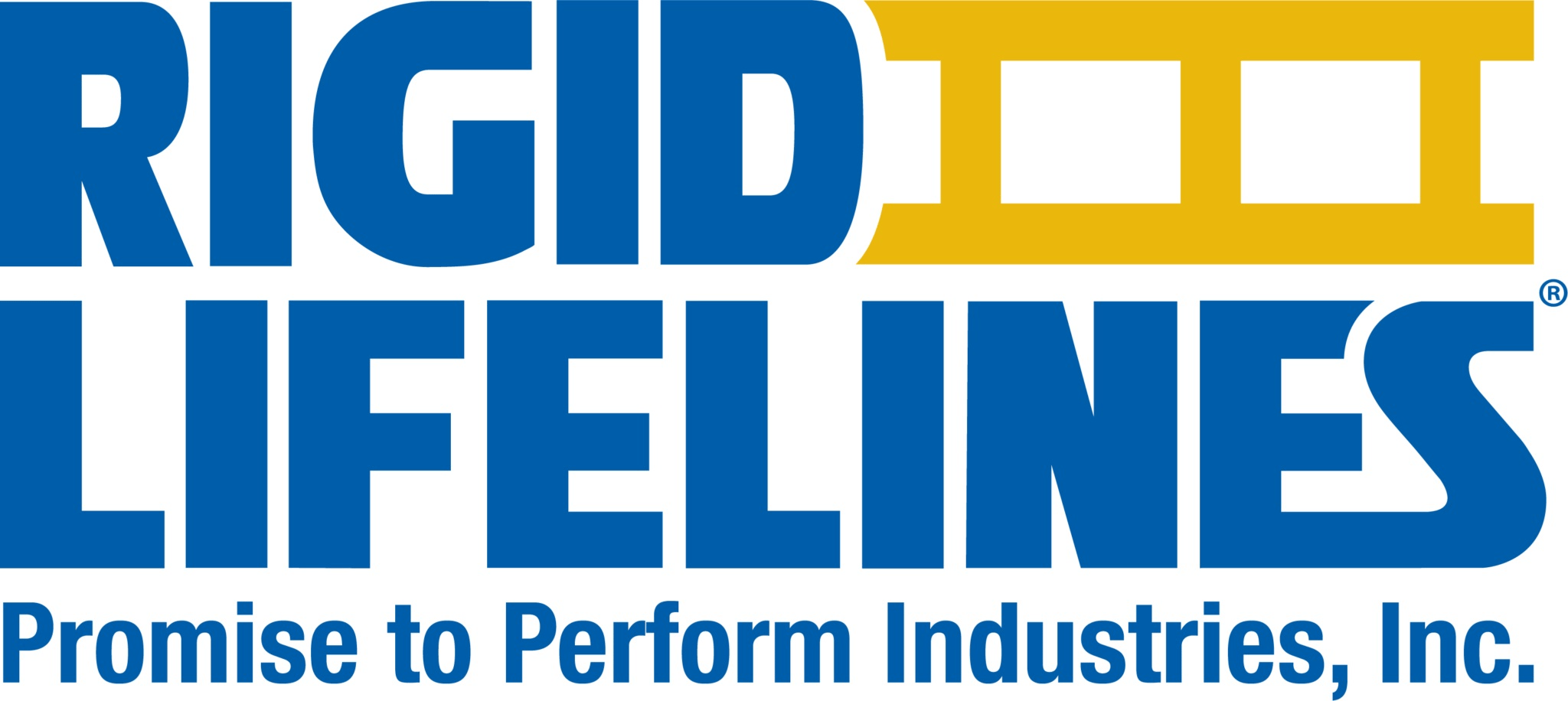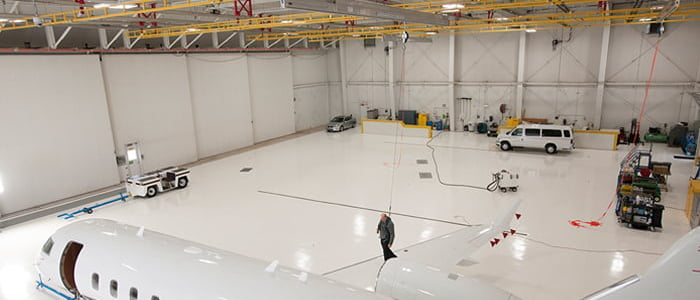Traveling Bridge Fall Arrest System in Corporate Aircraft Hangar
Northeastern United States
Project Details
- Location
- Northeastern United States
OVERVIEW
A major private northeastern airport is home to a corporate aircraft hangar for a large international company. The hangar houses a branch of the company’s aircraft, including three jets and two helicopters. These aircraft are flown on a weekly basis, depending on executive’s travel needs. As the aircraft move in and out of the hangar, they are positioned as needed. Due the demands of flying, the aircraft become dirty and require weekly cleaning and maintenance. In order to perform these tasks, hangar workers are required to access different sections of the aircraft. Using personal maintenance lifts, workers extend themselves to the height of the work area and step off onto the surface of the aircraft. The height of the working surface varies by the make of the plane, but the wings, fusil lodge, and stabilizers easily exceed OSHA’s law for working at height.
When current hangar manager Brian Stone arrived on the job, he recognized the fall hazards present in the hangar. When his workers were accessing the planes with maintenance lifts, they were not tied off to anchor points. Once on the plane exterior, the workers were walking in areas that became slick when sprayed with cleaner solution. The wings and fuselage introduced curved surfaces, and areas like the stabilizer did not leave much room for the miscalculation of a step. Not only did the situation require compliance with OSHA law, but the heights that his workers were operating at could cause death or serious injury if a fall occurred. Brian realized that the cost of a fall would be far more significant than an investment in the right fall arrest system.
Brian set out to research fall protection equipment on the internet. He reviewed many manufacturers and suppliers. He considered the possibility of using a less expensive system like a flexible cable system, but ran into problems when he realized there would have to be a large number of cables installed to cover the entire hangar. Having a cable system meant that if a worker was on a plane and had to complete a task just a few feet away, he would be burdened with unhooking, getting down, re-accessing the plane, and then re-attaching to the next cable. He needed something versatile, something that could accommodate his frequently changing aircraft and variety of aircraft with varying wing heights. Eventually he reached out to a friend who was in the same line of work. He explained his challenge and his friend referred him to a Rigid Lifelines fall protection specialist and dealer. The dealer came out on site, reviewed the application needs, and recommended traveling bridge systems. The design of the traveling bridge systems would allow for 100% fall arrest coverage in the hangar, so it wouldn’t matter which planes were parked in the hangar, or how they were parked. A bridge could be rolled overhead in any part of the hangar to provide fall arrest coverage. The rigidness of the system bridge in coordination with a Self Retracting Lanyard (SRL) would stop falls quicker than a cable system. This meant that in the event a worker did fall while on the plane, he would not fall far enough to be injured by impacting the plane. The traveling bridge system also eliminates the possibility of a pendulum swing into the side of a plane because the bridge centers the fall protection overhead at all times. Swinging falls could not only injure or kill an employee, but could also damage the side of plane within seconds. Brian was impressed with the benefits of the Rigid Lifelines system and decided to make the investment.
SOLUTION
Engineered to current ANSI and OSHA standards, the system installed was a custom traveling bridge system composed of four 150ft long enclosed track steel runways, each utilizing two aluminum bridges with 30ft spans. One runway was customized with three bridges to accommodate air filter cones hanging from the hangar ceiling. The brackets used to attach to the existing hangar were custom engineered for the hangar. Now when workers get ready to work on a plane, the worker puts on a harness, pulls down the SRL hook and latches into his D-ring. He is then immediately connected to a rigid aluminum bridge that travels back and forth on the runway as the employee walks. Using the maintenance lift, the workers access the plane, but now when they step-off the lift and maneuver on the aircraft surface, they are protected overhead by a traveling bridge. After hangar employees got their first chance to wash planes with the new system, they came away with nothing but positive things to say, including that it was easy to use, it did not interfere with their work tasks, and they felt safe with 360 degrees of fall protection coverage.
IMPACT
Since the installation of the traveling bridge system in his hangar, Brian has had other hangar managers stop in to see the system and how it works. He takes pride in the fact that he is protecting his workers with a system that provides the shortest fall distance on the market. Brian has also increased his productivity. The traveling bridge system allows one of his work crews to maintain planes on one part of the hangar floor, while another crew can wash a plane in another area. Both crews can utilize fall protection without waiting for the other to be done therefore maximizing their time. Brian summed up his thoughts on the system by saying “at the end of the day you completely forget that you’re attached to a system. It adds a level of safety in an environment that can be unsafe without a system like this.”



